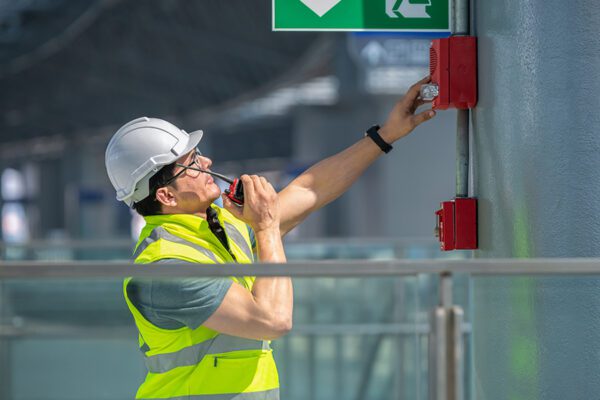Many employers believe they are in full compliance with OSHA requirements only to learn, the hard way, there are pieces still missing. The complexity of these standards and requirements add to the confusion, and while employers can be credited for making good faith efforts to comply, many still find themselves on the hook for tens of thousands of dollar in penalties.
John Newquist recently published the “Scary 13” in the June, 2019 issue of The National Safety Council’s Safety + Health magazine. John was a long-time OSHA employee and Area Director. The following “Scary 13” are common citations issued to employers who fail to maintain required documentation. I’ve also included references to the applicable OSHA standard.
- Lockout/tagout authorized employee training:
OSHA differentiates between training required for affected and authorized employees. Authorized employees require a greater level of training because those employees are responsible for making repairs, adjusting, and setting up affected equipment. Employers must provide more specialized training to authorized employees and maintain the documentation demonstrating this training was completed.
1910.147(c)(7)(i)(A)
Each authorized employee shall receive training in the recognition of applicable hazardous energy sources, the type and magnitude of the energy available in the workplace, and the methods and means necessary for energy isolation and control. - A current list of chemicals used at the facility:
OSHA requires all employers to maintain a list of all hazardous chemicals stored or used in the workplace. Many employers collect and maintain the required safety data sheets (SDS), but fail to compile the list.
1910.1200(e)(1)(i)
A list of the hazardous chemicals known to be present using a product identifier that is referenced on the appropriate safety data sheet (the list may be compiled for the workplace as a whole or for individual work areas) - Temporary employees’ OSHA 301 form or state first report of injury form:
Many employers who provide the day-to-day direction to temporary workers don’t realize they are responsible for recording temporary worker injuries on their OSHA 300 log. Additionally, the company who uses temporary employees must maintain an OSHA 301 form or state first report of injury report for each temporary worker injury. Companies should tell the temporary firms they use to supply an OSHA 301 form or state workers’ compensation first report of injury form for each temporary worker recordable injury.
1904.31(b)(2)
If I obtain employees from a temporary help service, employee leasing service, or personnel supply service, do I have to record an injury or illness occurring to one of those employees? You must record these injuries and illnesses if you supervise these employees on a day-to-day basis. - Training records for electrical safe work practices:
Many employers are unaware of the special requirements for employees who are exposed to energized electrical circuits. These employees must be furnished with personal protective equipment adequate for the voltages and arc blast potential of the work they perform and with specialized arc flash, or NFPA 70E, training. This training can involve two, full-days of specialized training by persons qualified in electrical safety.
1910.332(a)
Scope. The training requirements contained in this section apply to employees who face a risk of electric shock that is not reduced to a safe level by the electrical installation requirements of 1910.303 through 1910.308. - Annual respirator fit testing and respiratory protection training:
Employers often provide the correct respirators to employees, but fail to provide initial and annual respirator fit testing and respiratory protection training to those employees. Fit testing helps assure a proper fit, and intended protection, of the respirator. All personal protective equipment (PPE) must be supported with documented training.
1910.134(f)
Fit testing. This paragraph requires that, before an employee may be required to use any respirator with a negative or positive pressure tight-fitting facepiece, the employee must be fit tested with the same make, model, style, and size of respirator that will be used. This paragraph specifies the kinds of fit tests allowed, the procedures for conducting them, and how the results of the fit tests must be used.1910.134(k)
Training and information. This paragraph requires the employer to provide effective training to employees who are required to use respirators. The training must be comprehensive, understandable, and recur annually, and more often if necessary. This paragraph also requires the employer to provide the basic information on respirators in Appendix D of this section to employees who wear respirators when not required by this section or by the employer to do so. - Lockout/tagout annual program audit:
One of the most common citations is for the failure of employers to complete, and document, an annual LOTO program audit. The purpose of the audit is to verify the effectiveness of equipment specific lockout tagout procedures. Every machine or process must have a specific procedure detailing exactly how the machine or process is to be shut down and isolated from potentially hazardous sources of energy.
1910.147(c)(6)(i)
The employer shall conduct a periodic inspection of the energy control procedure at least annually to ensure that the procedure and the requirements of this standard are being followed. - Personal protective equipment (PPE) training:
OSHA requires employers to complete a certified personal protective hazard assessment. Upon completion of the certified assessment, employers must provide employees required to use PPE with training.
1910.132(f)(1)
The employer shall provide training to each employee who is required by this section to use PPE. Each such employee shall be trained to know at least the following:1910.132(f)(1)(i)
When PPE is necessary;1910.132(f)(1)(ii)
What PPE is necessary;1910.132(f)(1)(iii)
How to properly don, doff, adjust, and wear PPE;1910.132(f)(1)(iv)
The limitations of the PPE; and,1910.132(f)(1)(v)
The proper care, maintenance, useful life and disposal of the PPE. - Noise exposure training:
Industrial and manufacturing employers are required to develop and implement a hearing conservation when noise levels exceed 85 dBA. When noise levels exceed 85 dBA, employers must arrange audiograms for affected employees, provide hearing protection, and train affected employees.
1910.95(k)(2)
The training program shall be repeated annually for each employee included in the hearing conservation program. Information provided in the training program shall be updated to be consistent with changes in protective equipment and work processes. - Bloodborne pathogens training:
Employers whose employees are exposed to blood and body fluids during the course of work are subject to OSHA’s bloodborne pathogens standard, including training in the hazards associated with bloodborne pathogens and methods employees can use to protect themselves from those hazards.
1910.1030(g)(2)(i)
The employer shall train each employee with occupational exposure in accordance with the requirements of this section. Such training must be provided at no cost to the employee and during working hours. The employer shall institute a training program and ensure employee participation in the program.1910.1030(g)(2)(ii)
Training shall be provided as follows:1910.1030(g)(2)(ii)(A)
At the time of initial assignment to tasks where occupational exposure may take place;1910.1030(g)(2)(ii)(B)
At least annually thereafter. - Confined space entry non-permit certification:
All industrial and manufacturing employers are required to complete, and document, an assessment of all work areas to determine if permit-required confined spaces exist. Failure to complete the assessment is a violation of the permit-required confined space standard.
1910.146(c)(1)
The employer shall evaluate the workplace to determine if any spaces are permit-required confined spaces. - Forklift recertification:
All employers are required to train employees who use powered industrial trucks including forklifts and powered pallet jacks. Retraining and a reevaluation of an employees’ competency in operating the equipment are required at least once every three years.
1910.178(l)(4)(iii)
An evaluation of each powered industrial truck operator’s performance shall be conducted at least once every three years.
1910.178(l)(6)
Certification. The employer shall certify that each operator has been trained and evaluated as required by this paragraph (l). The certification shall include the name of the operator, the date of the training, the date of the evaluation, and the identity of the person(s) performing the training or evaluation.
- Written PPE hazard assessment & certification:
OSHA requires industrial and manufacturing employers to complete a certified assessment. The assessment must identify hazards for which personal protective equipment can provide protection and specify the type of personal protective equipment that will be furnished.
1910.132(d)(2)
The employer shall verify that the required workplace hazard assessment has been performed through a written certification that identifies the workplace evaluated; the person certifying that the evaluation has been performed; the date(s) of the hazard assessment; and, which identifies the document as a certification of hazard assessment. - Hazard communication training with current chemicals
Most employers are familiar with OSHA’s hazard communication standard and the requirement to maintain safety data sheets and train employees. Many employers are unaware of the requirement to train exposed employees when a new chemical hazard is introduced into the workplace. For example, if flammable liquids are a new hazard introduced to the workplace, employees must be trained in the hazards of those flammable liquids.
1910.1200(h)(1)
Employers shall provide employees with effective information and training on hazardous chemicals in their work area at the time of their initial assignment, and whenever a new chemical hazard the employees have not previously been trained about is introduced into their work area. Information and training may be designed to cover categories of hazards (e.g., flammability, carcinogenicity) or specific chemicals. Chemical-specific information must always be available through labels and safety data sheets.
Summary:
As penalties for non-compliance escalate, it is increasingly important for employers to generate and maintain the necessary documentation. Many OSHA standards are complex and require a thorough review to ensure the correct documentation is being maintained.
If you have questions concerning the “Scary 13”, or any other safety and OSHA compliance matter, please contact Horton Safety Consultants.
Material posted on this website is for informational purposes only and does not constitute a legal opinion or medical advice. Contact your legal representative or medical professional for information specific to your legal or medical needs.


